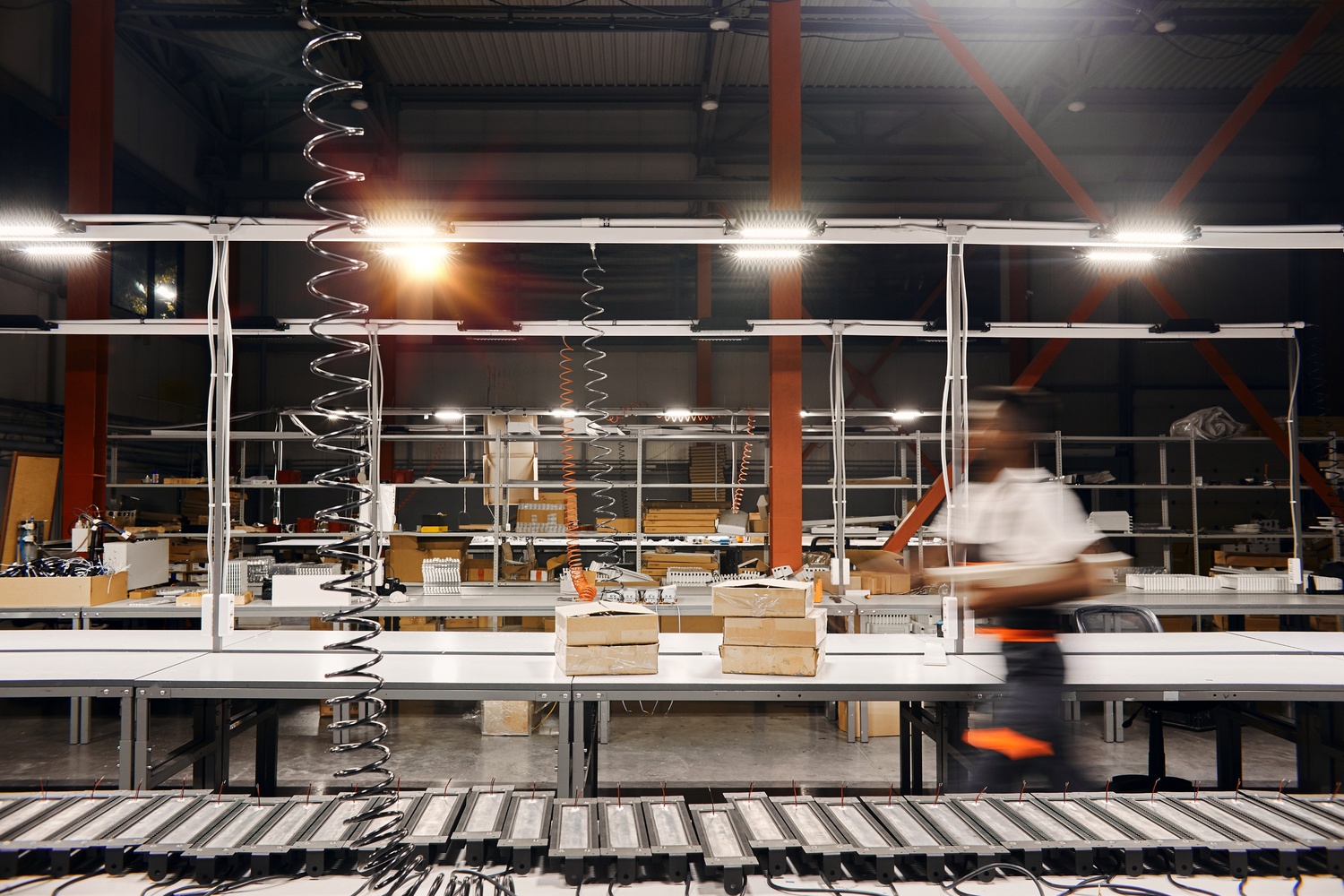In today’s business environment, companies are always looking for ways to improve workplace productivity. While factors like workplace design, wellness programs, and technology upgrades receive attention, lighting is often overlooked. Poor lighting can lead to eyestrain, fatigue, and reduced concentration, directly impacting performance. Energy efficient lighting offers a practical solution. This article explains how upgrading to modern lighting solutions enhances focus, improves mood, and supports workplace well-being, leading to higher productivity.
The Science Behind Lighting and Productivity
Lighting has a direct impact on how well we function during the day. It affects everything from mood to energy levels.
Impact of Light on Human Biology
Lighting significantly influences your circadian rhythm, which regulates sleep and energy levels. Bright, well-designed lighting helps keep you alert during the day by signaling to your brain that it’s time to stay focused. Poor lighting, on the other hand, can throw off this balance, leading to fatigue and low mood. Natural light tends to be the most beneficial for cognitive performance, but when that’s not available, artificial lighting that mimics sunlight can offer similar benefits.
Energy Efficient Lighting vs. Traditional Lighting
Energy efficient lighting, such as LED options, provides brighter, more consistent light compared to traditional bulbs. LEDs maintain stable brightness levels without flickering, which reduces eyestrain and helps you stay focused longer. These lighting systems also offer a more natural color spectrum, which positively impacts your concentration. Commercial lighting companies often recommend energy efficient options because they lower energy costs and help create a more productive environment by reducing the physical and mental fatigue associated with poor-quality lighting.
Optimizing the lighting in your workspace helps boost energy efficiency while driving improvements in productivity and employee well-being.
Enhancing Focus and Reducing Fatigue
Lighting plays a significant role in how well you can concentrate at work. Poor lighting not only distracts but also leads to discomfort.
Minimizing Glare and Eyestrain
Glare from poorly designed light sources leads to eyestrain, which can result in headaches and reduced focus. This can seriously impact your productivity. Using an energy efficient lighting option helps reduce glare and provides more even light distribution. These systems are designed for better visual comfort, which means fewer distractions and less eyestrain throughout the day.
Balancing Light Intensity for Optimal Work Conditions
The intensity of lighting should match the task at hand. Focused work requires different lighting than collaborative discussions. Adjustable lighting is essential because it lets you tailor light levels to specific tasks. Smart systems can even adapt to changing daylight and employee needs, balancing natural and artificial light to create a comfortable, productive environment.
Choosing the right lighting solutions creates a space that promotes focus and reduces the physical discomfort often caused by poor lighting.
Energy Efficient Lighting for Different Work Environments
The right lighting makes a huge difference in different work environments. Each industry has specific needs, and energy efficient lighting can adapt to meet them.
Tailoring Lighting for Various Types of Workspaces
Lighting requirements vary across industries. In office spaces, well-placed light fixtures help reduce eyestrain during computer work. Manufacturing floors, on the other hand, need brighter, more focused lighting for safety and precision. Energy efficient options, like LED lighting, offer the flexibility to suit both environments, adjusting brightness and color temperature to match specific tasks.
Supporting Various Tasks with Appropriate Lighting
In open spaces, ambient lighting encourages communication and collaboration by creating a comfortable atmosphere. For individual, focused tasks, task lighting plays a key role in boosting performance. In commercial buildings, using energy efficient lighting helps balance these different needs, ensuring every work area is properly lit without wasting energy.
Versatile lighting solutions create environments that support both teamwork and individual productivity, regardless of the industry.
Long-Term Productivity Gains
Investing in energy efficient lighting does more than cut down on your energy bill—it opens up opportunities to reinvest in your workplace.
Financial Savings and Reinvestment into Employee Well-Being
The significant energy savings from using LED lighting systems allow businesses to redirect funds into employee-focused improvements, such as wellness programs or ergonomic furniture. Many companies have reported that these investments improve workplace comfort and increase productivity. Case studies consistently show that energy efficient lighting upgrades lead to lower operational costs and better employee performance.
Sustainability Initiatives and Employee Engagement
Sustainability is becoming a key factor in how businesses engage their employees. Energy efficient lighting supports broader sustainability initiatives, helping companies achieve their environmental goals while strengthening their corporate social responsibility efforts. When employees see their workplace aligned with green initiatives, it boosts engagement and promotes a shared sense of purpose in working toward long-term goals.
Focusing on energy efficient lighting helps businesses achieve cost savings while also fostering a more motivated and productive workforce. For businesses looking to reduce operational expenses, Utility Bidder offers insights into optimizing energy costs while supporting sustainability goals.
Integrating Smart Lighting Systems for Optimized Workflow
Smart lighting can do much more than simply save energy—it can directly improve productivity by adapting to changing work environments and individual needs.
Leveraging Automation for Dynamic Work Environments
Automated lighting systems help maintain a productive workspace without requiring constant manual adjustments. These systems use sensors to detect occupancy and adjust light levels accordingly, so that work areas remain well-lit whenever needed. For example, in open offices, sensor-controlled lighting can automatically brighten during peak working hours or dim in less active areas.
Smart lighting also adjusts based on external factors like the time of day or weather. On cloudy days, the system can brighten indoor lighting to compensate for the lack of natural light, helping to maintain energy levels and focus. In contrast, when sunlight floods a room, the lighting system can dim to create a balanced environment, enhancing comfort and reducing energy waste.
Employee-Controlled Lighting
Giving employees the option to control the lighting in their personal workspaces can have a big impact on their productivity. With smart lighting systems, individuals can adjust brightness, color temperature, and other settings to match their preferences. For example, some employees might prefer brighter light for detailed tasks, while others might feel more comfortable with softer lighting for brainstorming sessions.
Smart lighting systems create flexible, responsive environments that adapt to the needs of the business and its employees, boosting productivity without adding complexity.
In Summary
Upgrading to energy efficient lighting offers more than just lower utility bills. It’s a practical investment in improving workplace productivity and employee well-being. By making this shift, you not only reduce energy consumption but also create a more comfortable and efficient work environment that supports focus and reduces fatigue.
Looking ahead, advancements in smart lighting systems are set to offer even more benefits. As these technologies continue to evolve, businesses can expect lighting solutions that adapt even better to the needs of employees and the workspace. Now is the time to consider how lighting upgrades can boost both performance and sustainability in your workplace.



